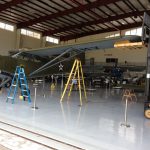 During World War Two, a group of heroic female pilots played a key role in defeating the German war machine’s attempts to conquer the United Kingdom.
During World War Two, a group of heroic female pilots played a key role in defeating the German war machine’s attempts to conquer the United Kingdom.
The women were pilots for the Air Transport Auxiliary (ATA), a small group of pilots who for reasons of age, gender or disability were unable to fly for the RAF. Rather they were tasked ferrying new, repaired and damaged military aircraft between UK factories and assembly plants, transatlantic delivery points, maintenance units, scrap yards as well as active duty squadrons and airfields, freeing up literally hundreds of RAF fighter pilots to do battle with the Luftwaffe.
During the war, the service flew 415,000 hours and delivered over 308,000 aircraft of 130 types including Spitfires, Hawker Hurricanes, Mosquitoes, Mustangs, Lancasters, Halifaxes, Fairey Swordfish, Fairey Barracudas, and Fortresses. By the end of the war the 168 girls who served with the ATA had ferried almost every conceivable type of aircraft in the RAF’s arsenal; It wasn’t a low risk vocation however and one in ten pilots lost their lives while flying for the ATA, including the pioneering female aviator Amy Johnson, who died along with 14 other female pilots.
On February 10th four of those amazing pilots, Maggie Frost, Joy Lofthouse, Mary Ellis and Molly Rose were the guests of honour at a signing event at the Aces High Aviation Gallery, in Wendover, Buckinghamshire, England. The four veterans of the ATA were able to talk to the assemblage about their wartime experiences.
Perhaps Lord Beaverbrook put it best when he said the following at the ceremony disbanding the ATA at the end of the war:
“Without the ATA the days and nights of the Battle of Britain would have been conducted under conditions quite different from the actual events. They carried out the delivery of aircraft from the factories to the RAF, thus relieving countless numbers of RAF pilots for duty in the battle. Just as the Battle of Britain is the accomplishment and achievement of the RAF, likewise it can be declared that the ATA sustained and supported them in the battle. They were soldiers fighting in the struggle just as completely as if they had been engaged on the battlefront.”
Indeed.























